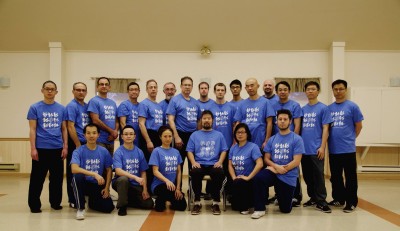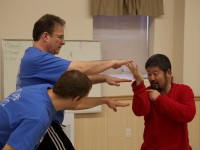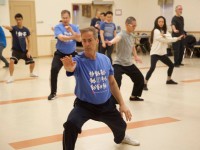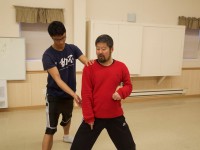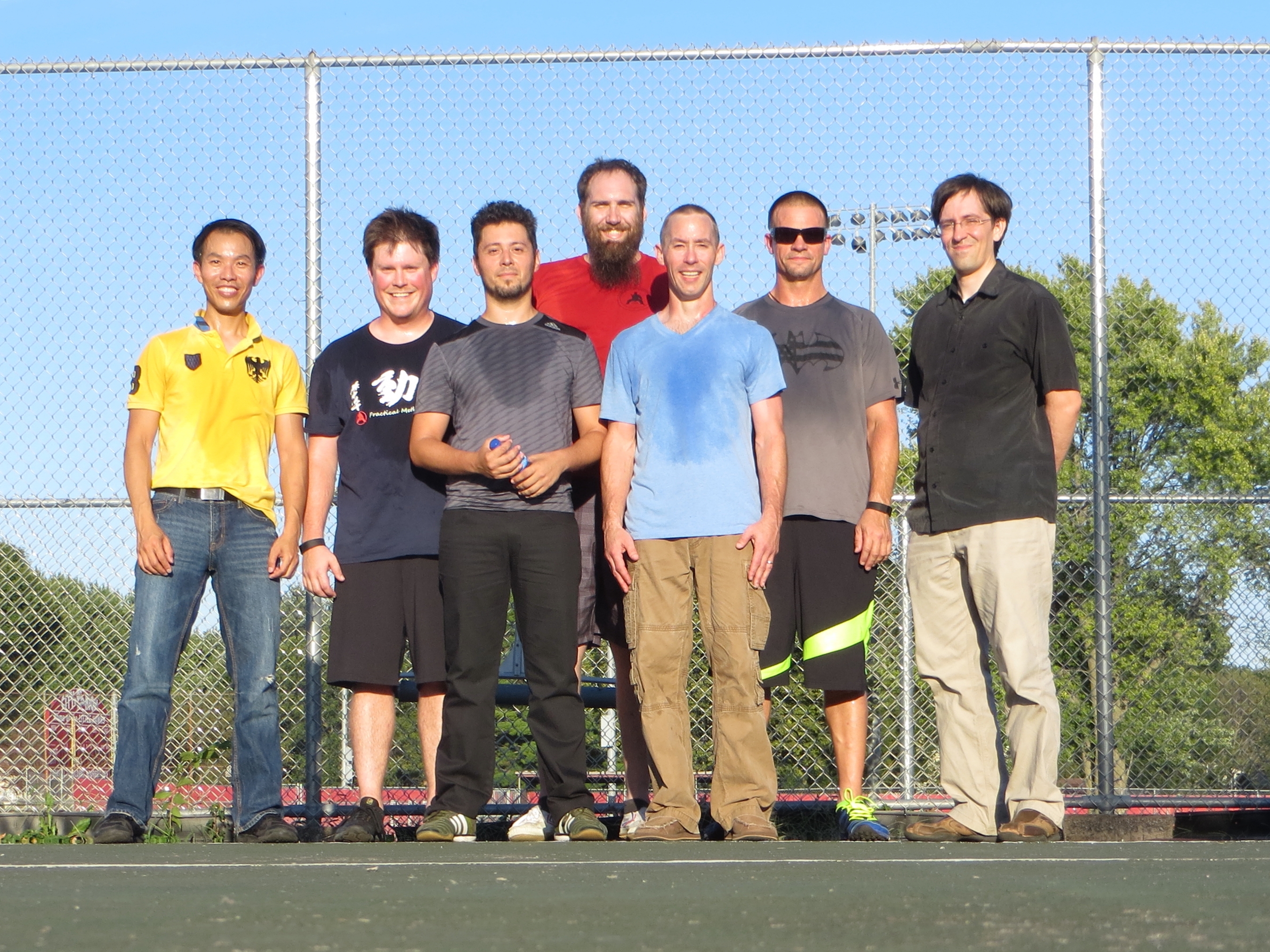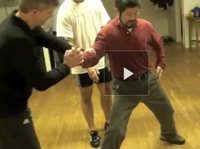- Ken Lang joined the class for the first time. He started learning about twisting the towel. He has been doing taiji for 10 years, and went to study at Chen Village for 6 weeks. His initial impression was that the Practical Method elbow-in was similar to what he learned in Chen Village. His teacher there was Master Chen Zhaosen.
- We reviewed twisting the towel, and how the hand is to be connected to the foot, and how to push the foot against the ground to squeeze out the hand.
- We did an exercise with one person pushing the other person’s hand up the arm, and how to prevent the shoulder being popped up, and how to stretch through the back to the rear foot to find the connection.
- We practiced taking out the space.
- I told Bruce during push hands, at this point, make it a focus to simply maintain the desired posture regardless of what the opponents does to him.
Kelvin Ho
In 2016, two Practical Method workshops were held in Toronto in January and September, with over 20 participants coming from Toronto and its surrounding cities, Ottawa, Montreal, New York, Michigan and as far away as California.
Video in Chinese: http://v.youku.com/v_show/id_XNjkwODU2OTE2.html
Notes:
- Master Chen when answering the question focused on Practical Method itself, and left it to the audience to do the comparison, as he couldn’t represent the other art.
- Practical Method’s core is rotation. Spiral and silk reeling is rotation plus distance.
- We can never do true rotation. It’s impossible for us to do 360 degree rotation. We can perform a lever action. A lever action is a part of a rotation.
- Form training is to create levers in our bodies.
- Grandmaster Hong Junsheng has the 10-word saying “Out with hand no elbow, in with elbow no hand”. Lin Ketong calls it 10-word mantra.
- This mantra actually describes the lever action.
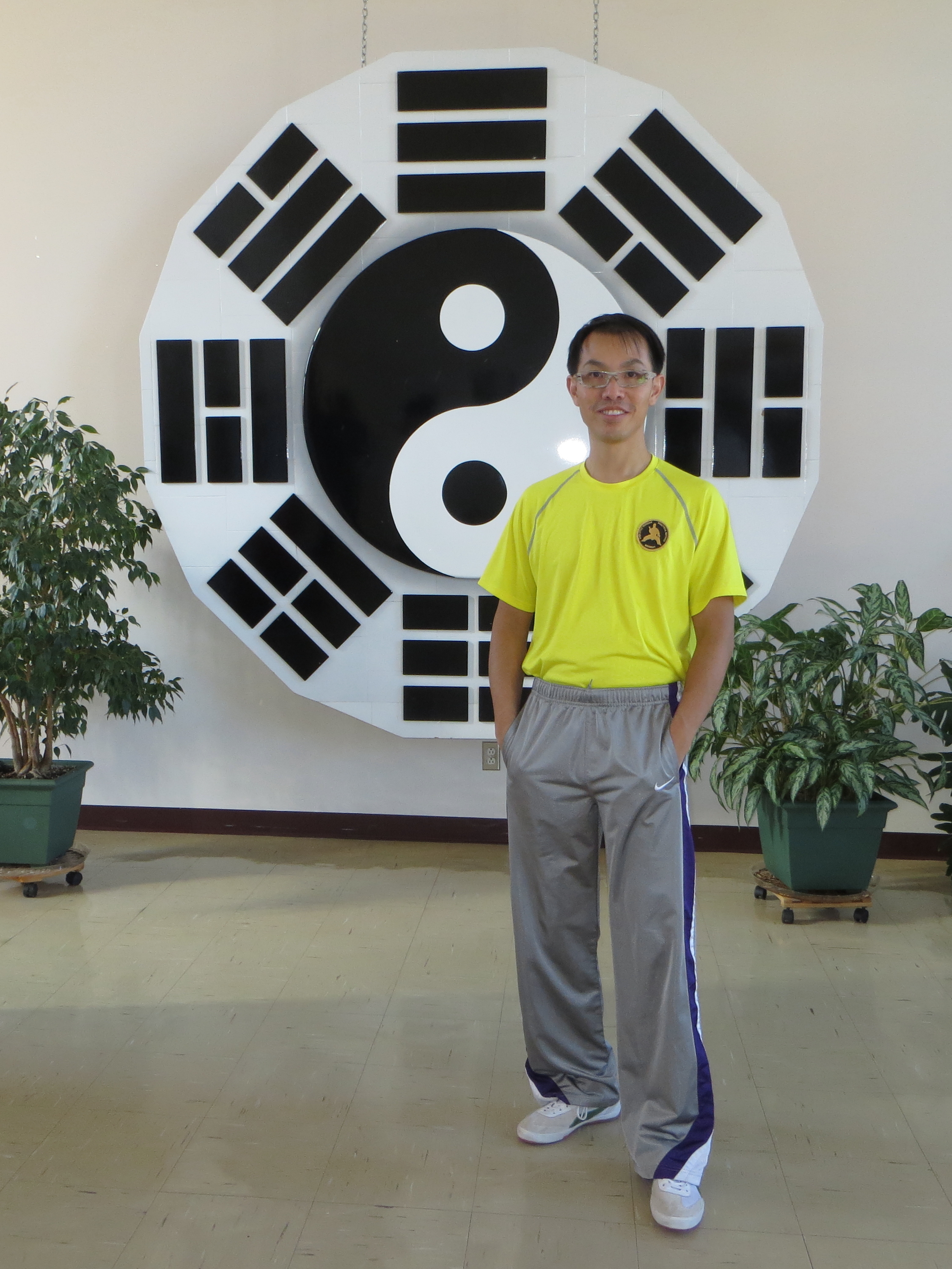
This is the first time I attended the Ottawa Workshop. Great group! Thanks Rachelle, James, and Daniel for organizing the workshop, and Rachelle for my stay at her place. Here are my notes:
- Move the feet. When we train, we fix the feet. When you push hands, we move the feet. Our feet are often not mobile enough, we must force ourselves to move them, e.g. getting in changes the pivot.
- The only way to connect is not to connect. Connection means moving and non-moving parts have a relationship. Read more
At the Ottawa Nov. 12-13, 2016 workshop, Master Chen Zhonghua talked about when doing twisting the towel or six sealing four closing, our hands and elbows must stay on the same line. Where was that line exactly? We often just imagined where that line was. He told us to use a physical object to guide us, and he used a stick to show us. In today’s class in Toronto, we started with twisting the towel and covered what I learned at the Ottawa workshop. We went on to use the railing at the community centre to do the six sealing four closing exercise.
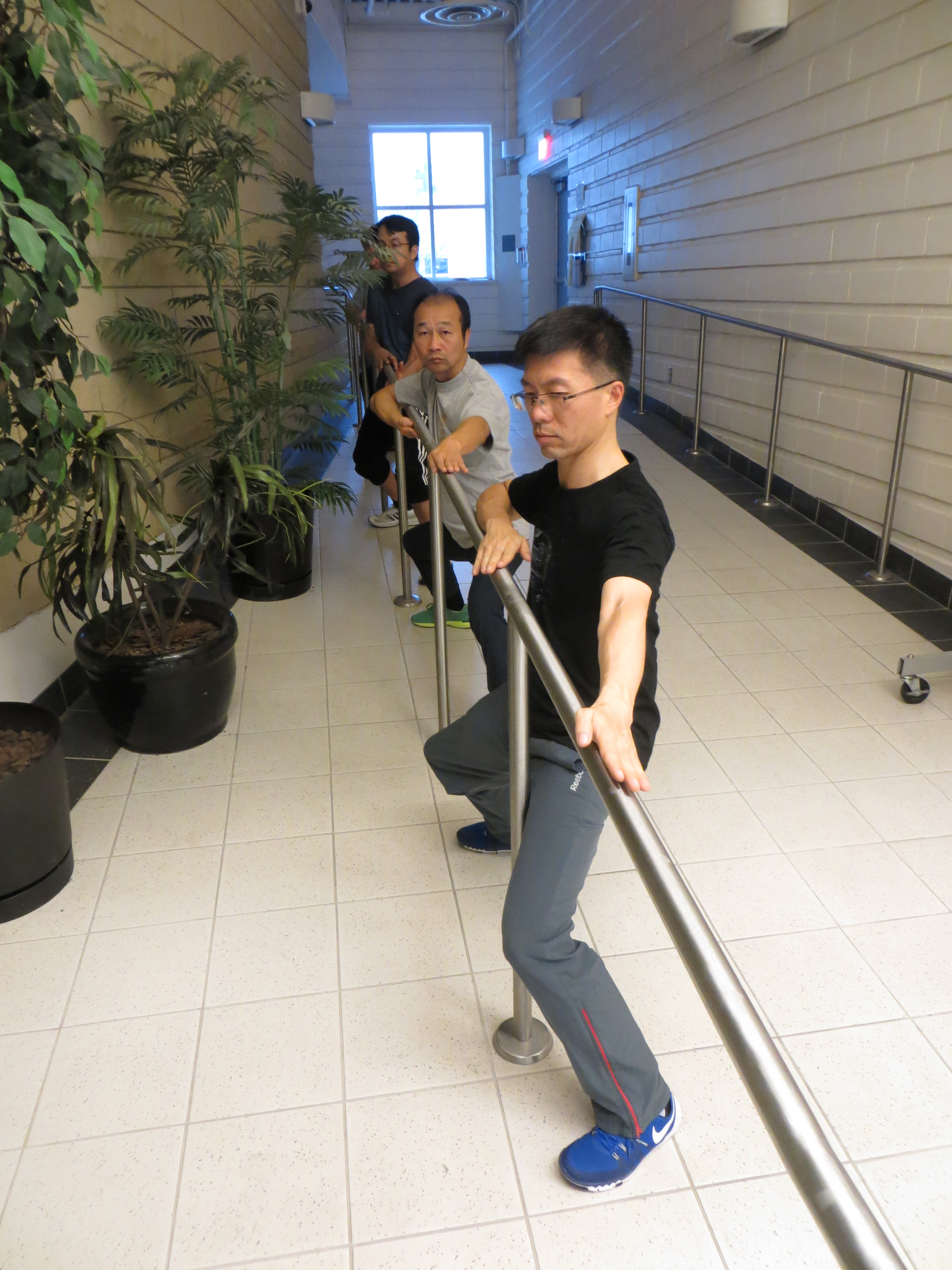
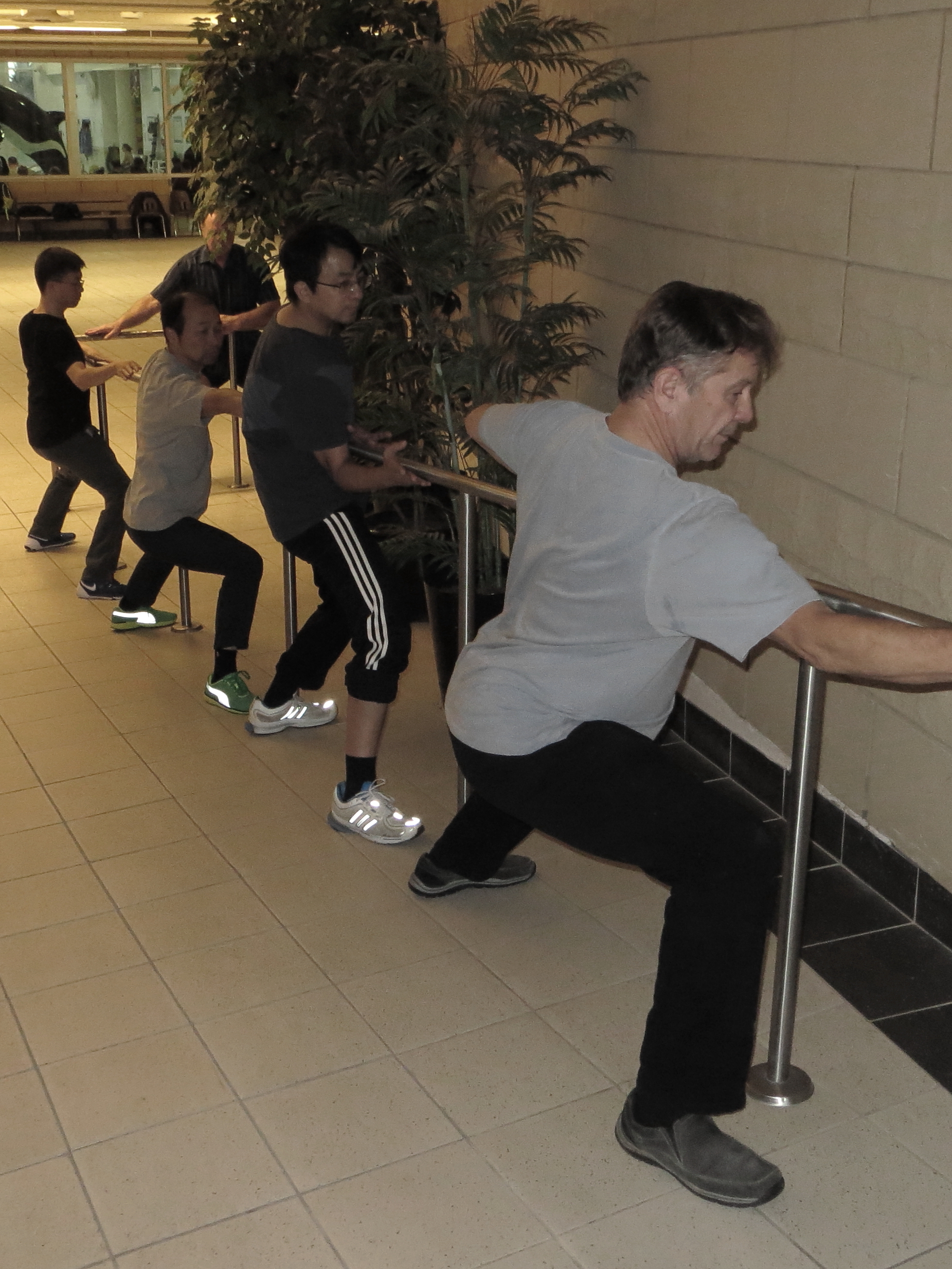
During the Toronto workshop today, Master Chen asked me to write about taking the group photo before we start the activities for the day from now on.
Instructor: Kelvin Ho
Topics:
- Footwork
– Shoveling out with Front Heel, Land the Front Foot, Pull up the Rear Foot
– Jumping across to cover distance - Aiming
– Aligning Front Hand with the Rear Foot
Master Chen Zhonghua has demonstrated numerous times of having a fixed point (dot) for rotation in his action. Recently, I start to understand the pair of contacting points which can be used to create a stick/lever. I have been able to rotate an opponent using a dot in the middle of the stick. Today, I realize this dot can, in fact, be in space, and not necessarily in the opponent’s body. It depends on how I contact the opponent, e.g. which body parts I use to create the stick. This kind of rotation is vertical, and can take the bottom support out from the opponent.
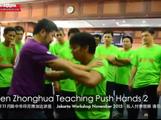
Presenter: Chen Zhonghua Length: 6 min. In: English & Chinese Year: 2015 Difficulty:2/5
![]()
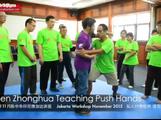
Presenter: Chen Zhonghua Length: 8 min. In: English & Chinese Year: 2015 Difficulty:2/5
![]()
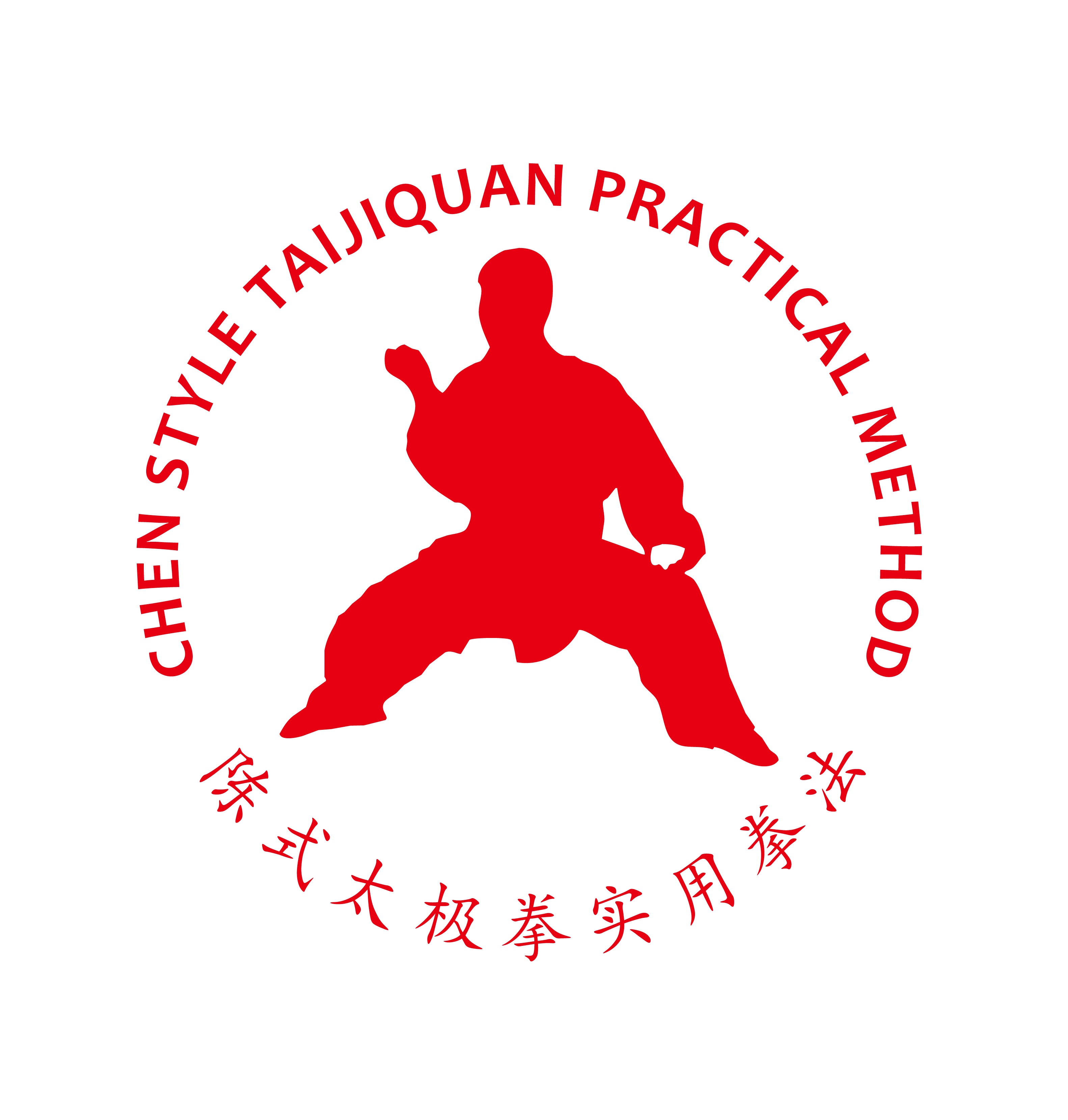 |
Chen Style Taijiquan Practical Method Toronto |

Negative circle is likely the second thing one learns in Practical Method. The following are some starter instructions for a right-side negative circle:
- The right side is considered the front side, and the left side is consider the rear side.
- Find a line that is parallel to your chest on the ground.
- Put your right foot at 45 degrees to the line with the heel touch the line.
- Put your left foot at 90 degrees to the line with the toes touch the line.
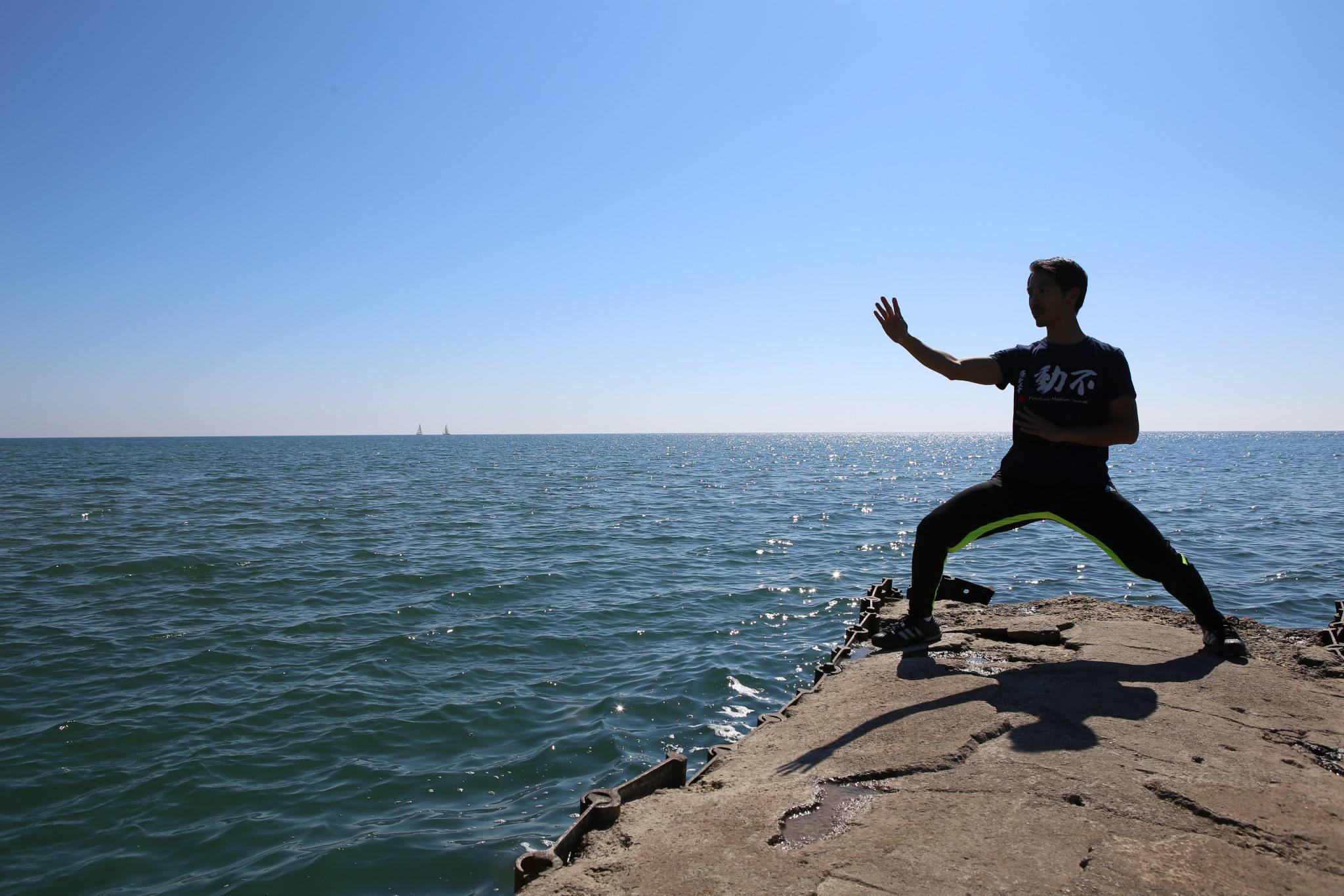
Positive circle is likely the first thing one learns in Practical Method. The following are some starter instructions for a right-side positive circle:
- The right side is considered the front side, and the left side is consider the rear side.
- Find a line that is parallel to your chest on the ground.
- Put your right foot at 45 degrees to the line with the heel touch the line.
- Put your left foot at 90 degrees to the line with the toes touch the line.
| Chen Style Taijiquan Practical Method Toronto |

When I first studied practical method in Nov. 2009, there were a few things that made a long lasting impression. They were:
- In with elbow no hand, out with hand no elbow.
- Don’t move
- Yilu, which is made up of only positive and negative circles.
Many beginners including myself usually ask the following questions:
- How did you (Master Chen) know to do that?
- How can I not move?
- What can I do that myself?
- How do I train that?
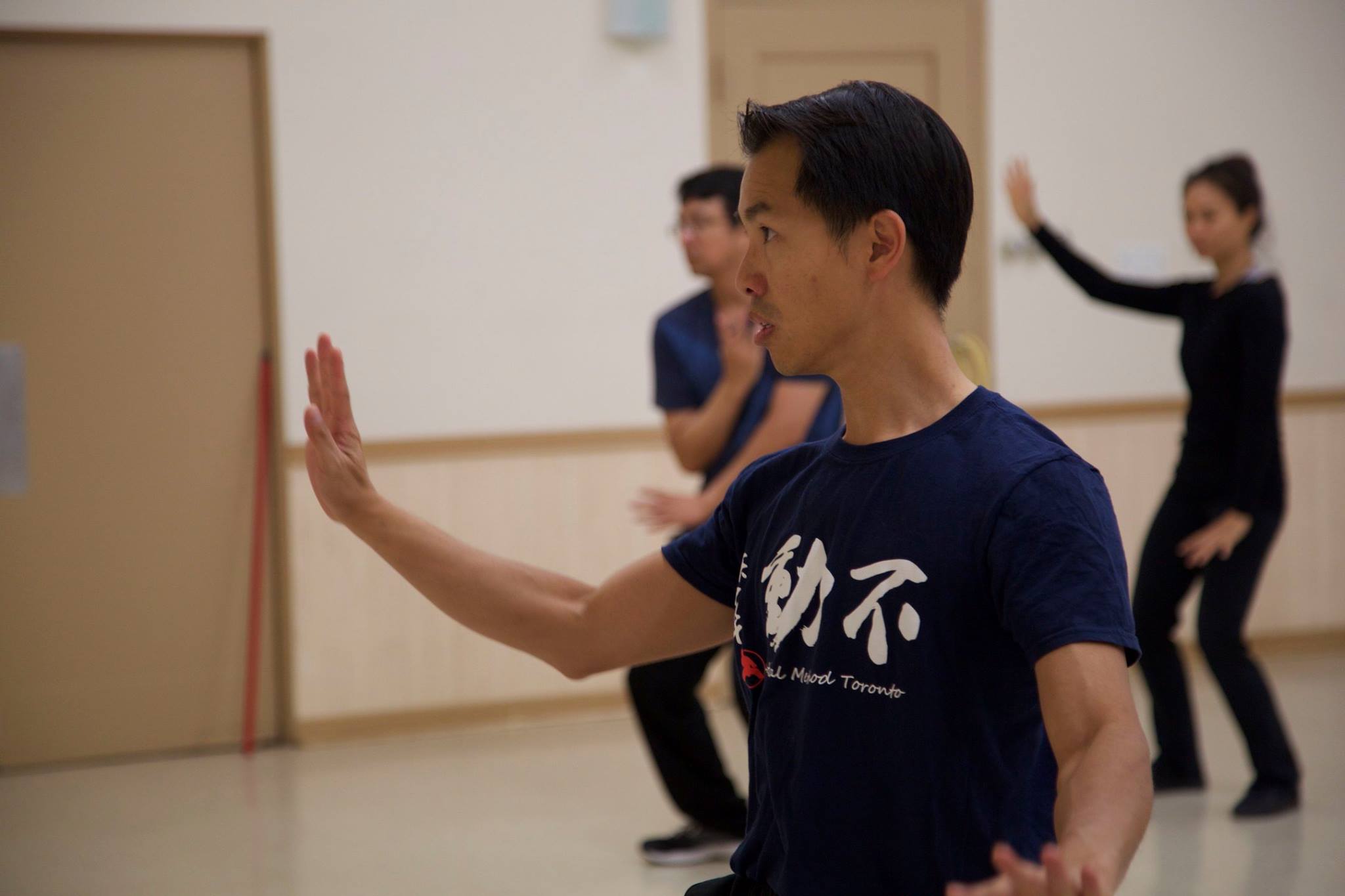
We had 19 people attending the Toronto workshop this time. 5 of them were first timers. We started off with Master Chen talking about the positive circle, and continuously focusing on its various aspects.
Here are my notes:
- Only move your foot forward towards the opponent, everything else does not go towards the opponent. Read more
Kewei Sun has started learning Practical Method since May 23, 2015.
Read more
I attended the Practical Method Iowa Workshop 2015. Officially, the workshop was on Sep 12-13, 2015. I spent a total of 6 days there from Sep 10-15, 2015. It was the best workshop I had ever attended. We had a lot of dedicated Practical Method people there. Thanks to Levi and Christina who let a number of us stay at their place the whole time, and gave us the opportunity to immerse in taiji with Master Chen Zhonghua. Thanks to Levi and John for taking care and arranging food, as well as driving us around. We woke up early at 4:20 am to start doing yilus before breakfast, and we often pushed hands till 10:30 pm at night. It was just wonderful being around my taiji brothers.
The following are the notes I took:
Day 1
– Keeping the back straight at all times
– Always have an aim at the centre, every movement should result back to the centre (don’t deviate from it)
– Keep the movement small, otherwise it is wasteful, and there won’t be any left.
-Separation: When the hands have power, move in the waist. Have power in the waist, the hands can become free. Nudge in bit by bit.
Read more

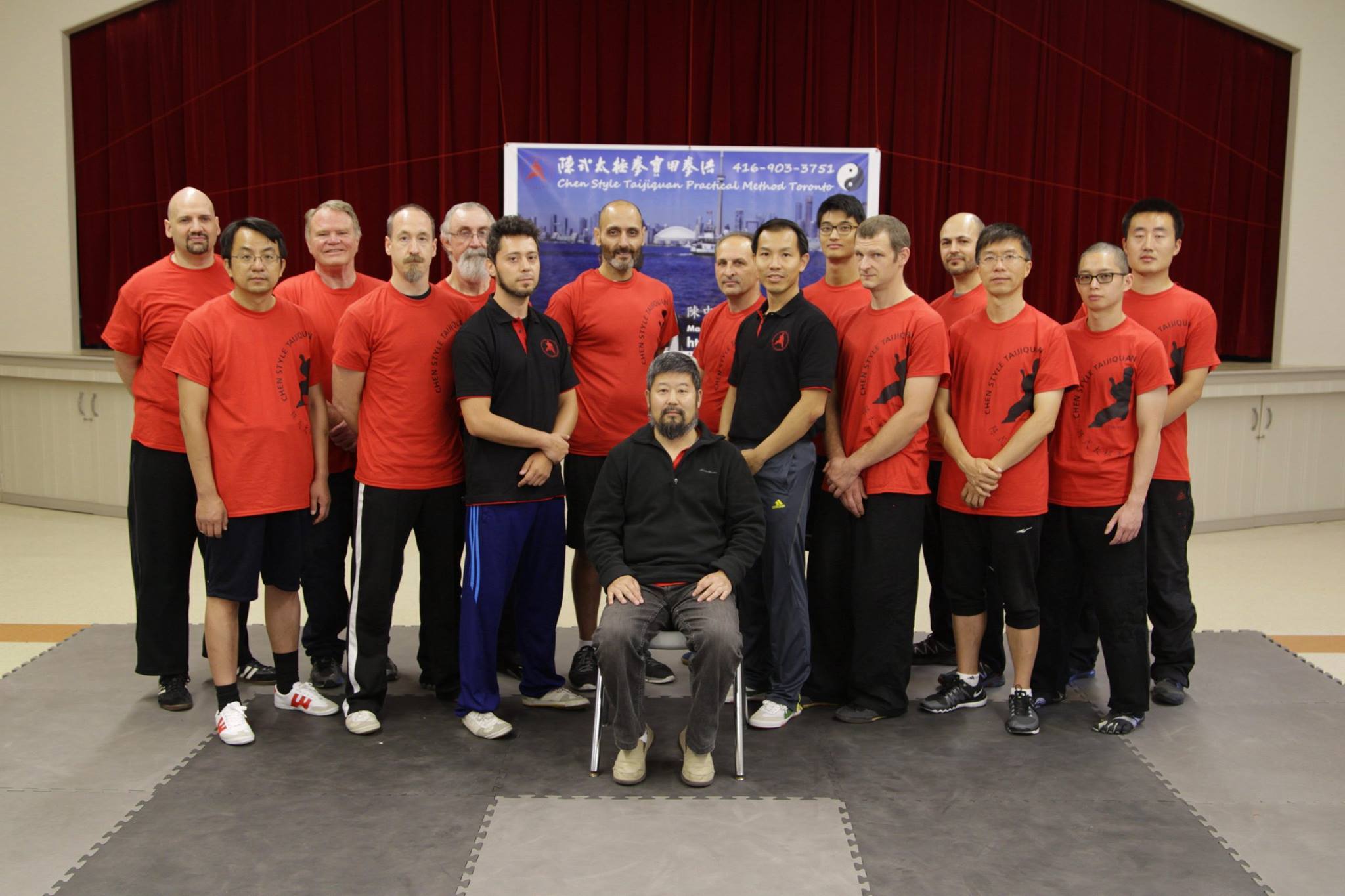
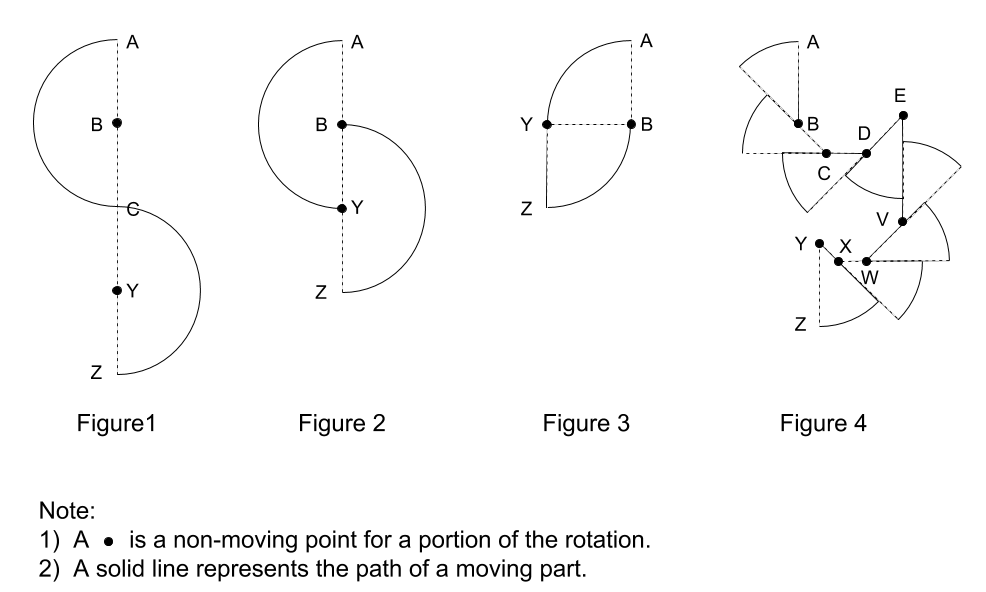
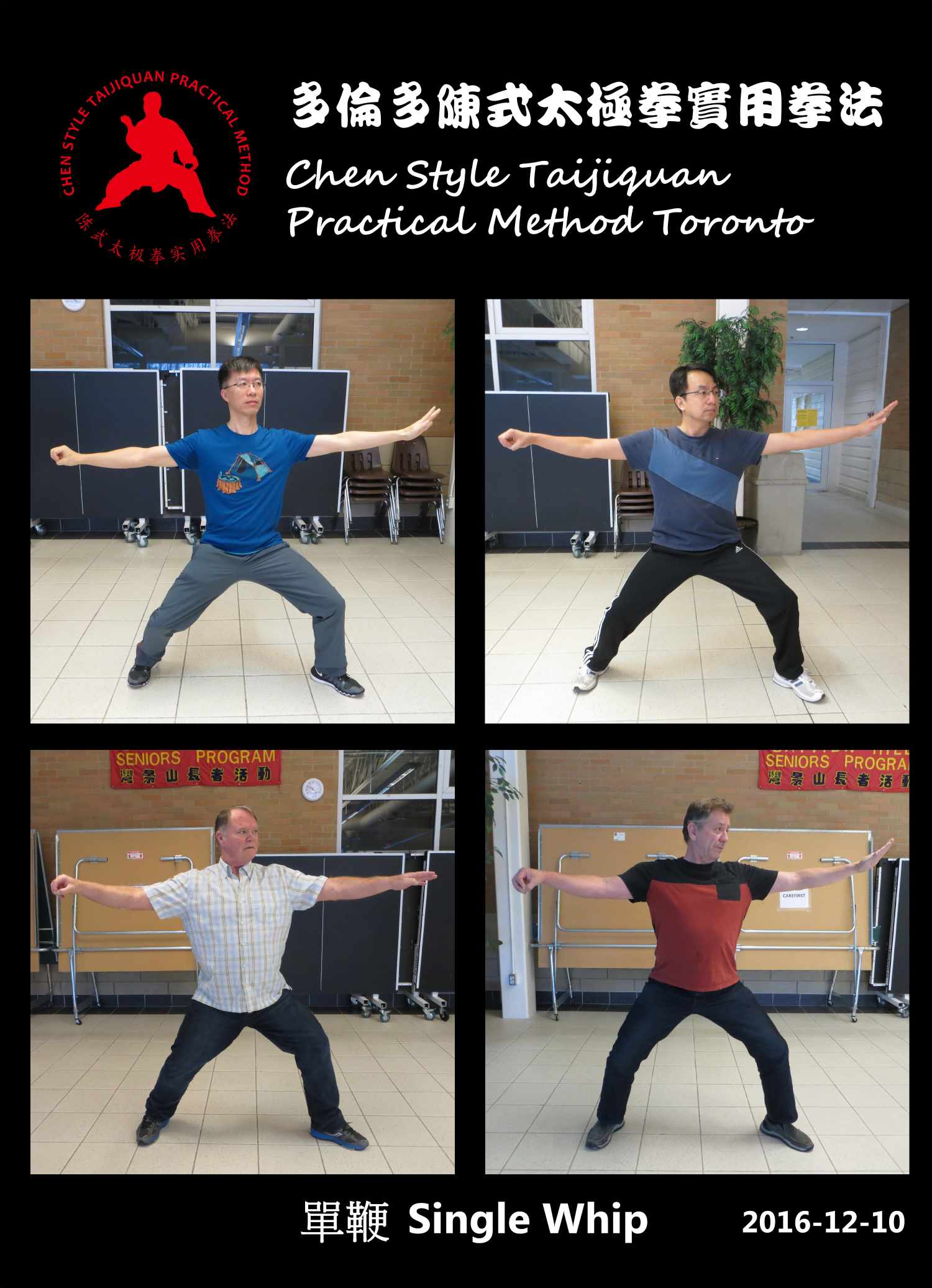
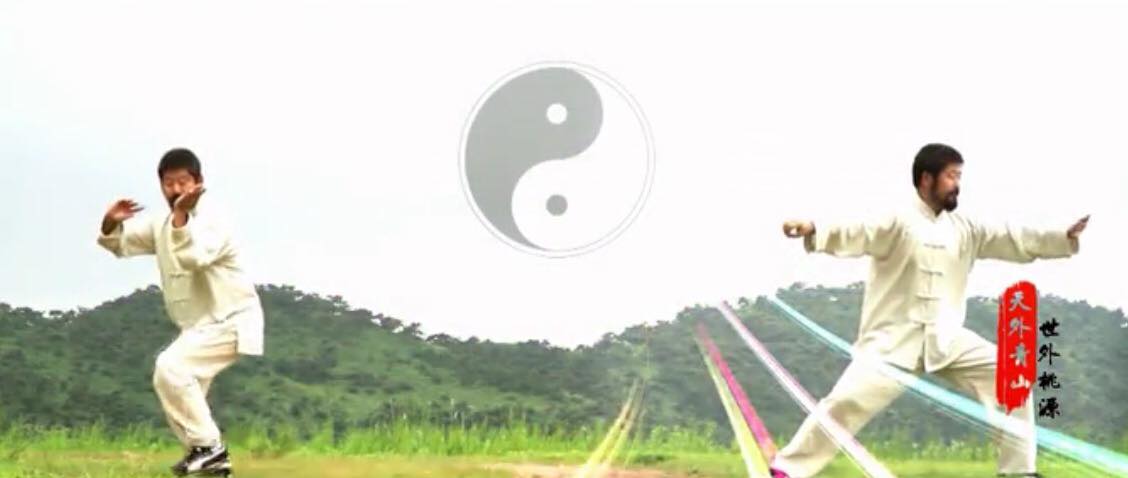 Click to play the video
Click to play the video